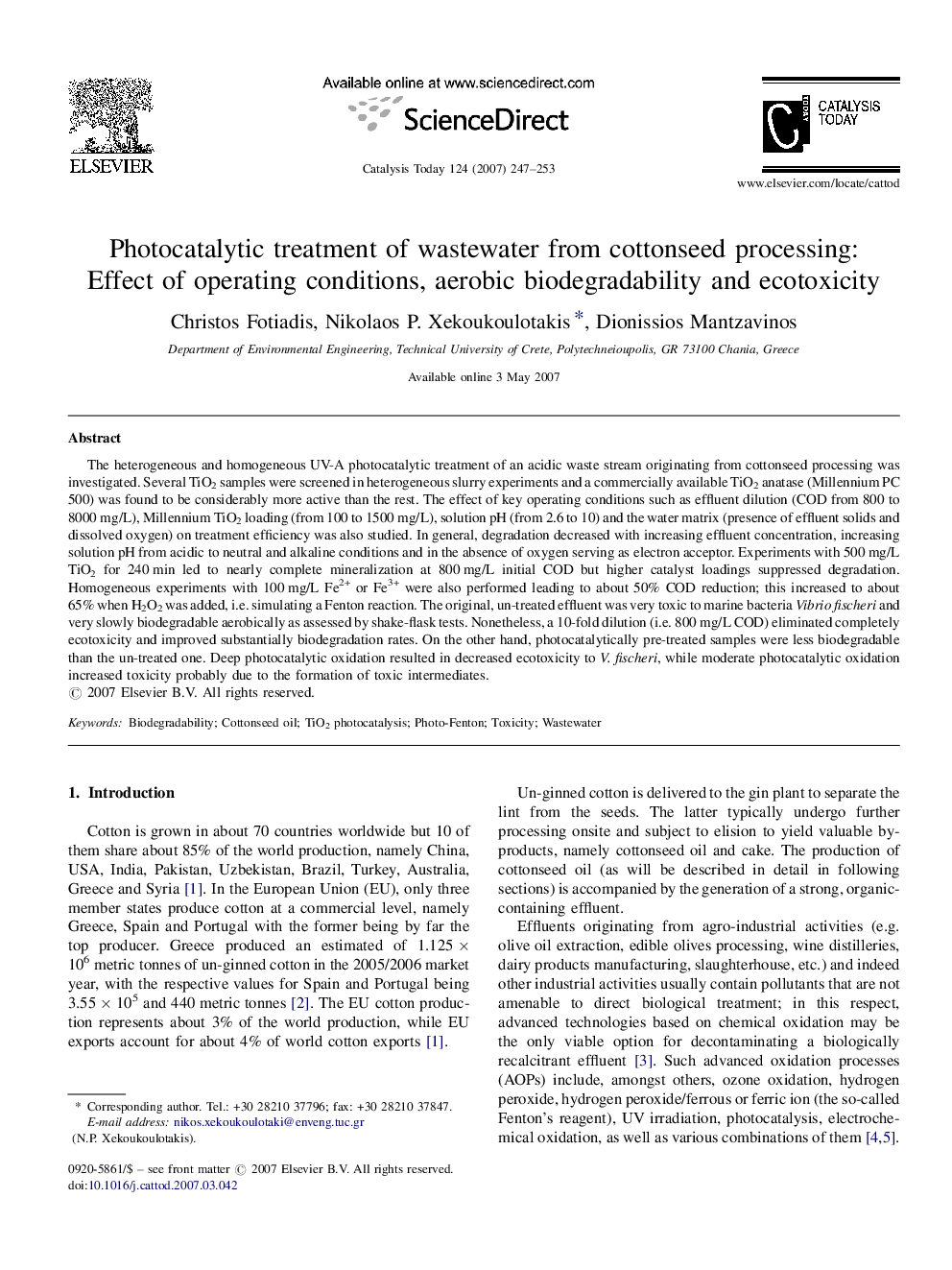| کد مقاله | کد نشریه | سال انتشار | مقاله انگلیسی | نسخه تمام متن |
|---|---|---|---|---|
| 58128 | 47142 | 2007 | 7 صفحه PDF | دانلود رایگان |

The heterogeneous and homogeneous UV-A photocatalytic treatment of an acidic waste stream originating from cottonseed processing was investigated. Several TiO2 samples were screened in heterogeneous slurry experiments and a commercially available TiO2 anatase (Millennium PC 500) was found to be considerably more active than the rest. The effect of key operating conditions such as effluent dilution (COD from 800 to 8000 mg/L), Millennium TiO2 loading (from 100 to 1500 mg/L), solution pH (from 2.6 to 10) and the water matrix (presence of effluent solids and dissolved oxygen) on treatment efficiency was also studied. In general, degradation decreased with increasing effluent concentration, increasing solution pH from acidic to neutral and alkaline conditions and in the absence of oxygen serving as electron acceptor. Experiments with 500 mg/L TiO2 for 240 min led to nearly complete mineralization at 800 mg/L initial COD but higher catalyst loadings suppressed degradation. Homogeneous experiments with 100 mg/L Fe2+ or Fe3+ were also performed leading to about 50% COD reduction; this increased to about 65% when H2O2 was added, i.e. simulating a Fenton reaction. The original, un-treated effluent was very toxic to marine bacteria Vibrio fischeri and very slowly biodegradable aerobically as assessed by shake-flask tests. Nonetheless, a 10-fold dilution (i.e. 800 mg/L COD) eliminated completely ecotoxicity and improved substantially biodegradation rates. On the other hand, photocatalytically pre-treated samples were less biodegradable than the un-treated one. Deep photocatalytic oxidation resulted in decreased ecotoxicity to V. fischeri, while moderate photocatalytic oxidation increased toxicity probably due to the formation of toxic intermediates.
Journal: Catalysis Today - Volume 124, Issues 3–4, 30 June 2007, Pages 247–253